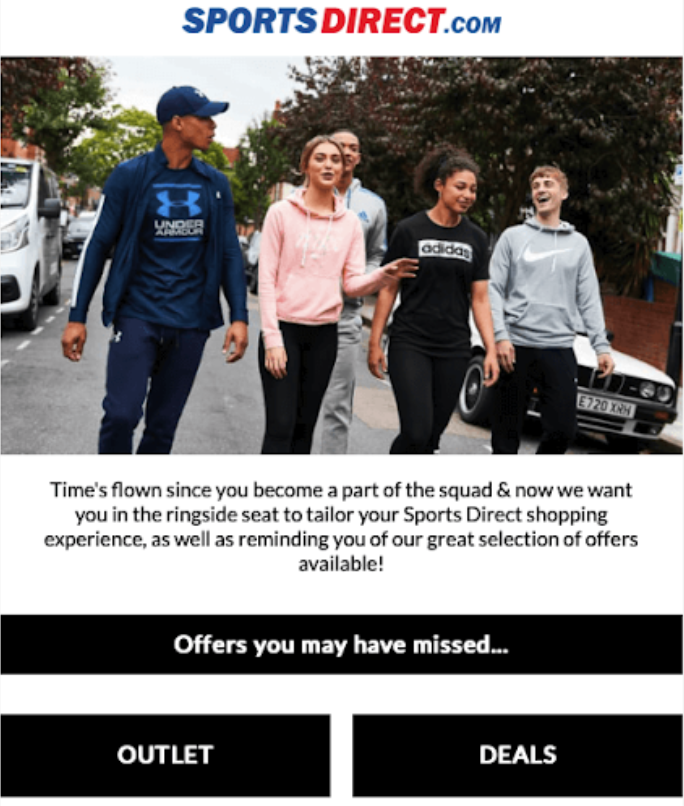A properly executed email marketing campaign can increase conversions. Email marketing has a return on investment of $36 for every $1 spent. That translates to more revenues for your company.
*Updated 7/5/2024
You can’t just send emails whenever you want; you must send them at the right time. People who subscribe to your email list should receive a welcome email. Or if they purchase something, they should get a thank you message and the order details.
Although you could send these emails manually, as your email list grows and the conversion actions become more varied, it may not be sustainable to do this. That’s where email drip campaigns can help you.
Importance of Email Drip Campaigns
Email drip campaigns involve the automated sending of a series of emails after a lead acts.
A specific email drip campaign will trigger a particular action taken by a lead. For example, downloading a lead magnet on your website or just leaving the site without pushing through with a purchase.
Email drip campaigns work because your messages go out at the best times. If you send them a list of products that complement their previous purchase, they’re more likely to buy them.
But that’s not the only reason why email drip campaigns are great.
Because email drip campaigns are automated, they reduce the workload of your marketing team, who can now focus on other significant marketing aspects. Ultimately, that produces better business results.
Now that’s settled, the question is, what drip campaigns should you run?
Five Drip Campaigns that Convert
Whether you’re a startup seeking grants for small businesses or a full-fledged company already reaping the benefits of your hard work, including these email drip campaigns in your marketing plan can ensure quality marketing and, by extension, business success.
1. Welcome emails
Welcome email sequences do precisely what they’re called: warmly welcome the lead. Doing so provides a positive brand experience for the prospective customer.
When are these emails triggered? They are triggered when a user subscribes to your email list or signs up for your service. You get their email addresses using web forms. POWR’s Form Builder can help you create and customize them.
These web forms come accompanied by lead magnets that can entice the visitor to fill out your form in the first place. These lead magnets can come via ebooks, whitepapers, and quizzes.
Once a person signs up for your email list, don’t forget to use the best email finder tools to verify the emails. You want to ensure your emails reach the right people.
So, how does the first email in a welcome sequence look?
Check out the email sent by 16Personalities after a website visitor signs up for their newsletter. Just for a bit of context, the company gave a personality test as a lead magnet to get people to fill out their form:
A follow-up email should be sent automatically to the new subscriber after a few days. Doing so will provide more value. So, you can share with them a blog post, a video, and curated content. Here’s what 16Personalities did in their second email:
Notice that the email is tailored to the subscriber’s experience. So, since the subscriber’s test results show they have an “advocate” personality, this second email only talks about that type of personality.
You can send a third email presenting your product as the solution to your subscriber’s pain point. In 16Personalities’ case, they did that in the second email. Notice, though, that the product pitch is very subtle. It’s just one line in an email that has multiple paragraphs. When subscribers click on this link, they get to a page that details the company’s services. You can take inspiration from what the company did.
The point is one welcome email doesn’t suffice. After building the relationship, nurture the connection by sending more related emails in the sequence.
2. Promotional offers
If you have a limited-time offer, you can not wait for people to avail of it so you can generate sales. If you want the best results, you need to be proactive.
Besides, 28% of subscribers said they want to see promo offers from companies twice or even thrice a week. Although 28% doesn’t seem a lot, it’s still potential sales. So, run promotional offer email drips.
How should your promotional offer drip campaign look?
In the first email, give subscribers promo details like the dates it’s effective and how customers can avail of it. Include a CTA in your initial email as well to drive conversion.
You may send a follow-up email a day or two later if your readers don’t take action. Include testimonials.
You can also use urgency. Check out the example from Zalora above. The eCommerce brand instills that urgency with the words “Last Chance.”
When you tell subscribers the offer that allows them to save will not go on forever, you can get them to take action. That’s FOMO or the fear of missing out. Including a countdown timer can also help.
3. Upselling and cross-selling
One effective way to increase revenues through email marketing is by upselling and cross-selling. In email marketing, upselling involves recommending products to the buyer that are higher-priced than a product they just bought.

Meanwhile, cross-selling involves recommending products related to or complementing a recently purchased item. With both strategies, the goal is to get the customer to spend more.
After the purchase, you can’t just send an email that shoves your recommendations onto your customer. You might just turn them off for being too sales-y.
So, your first email in an upselling and cross-selling email sequence should include a “Thank You For Your Purchase” message first and then your product recommendation. Include a discount for that or free shipping. Then, add a CTA button. Here’s an example of a cross-selling email that follows that strategy:
Send a follow-up email if needed. You may add urgency to the email by including a countdown timer, too, like the one below:
Depending on what you’ve seen works for your business, you can mix the emails up in the sequence.
Once you have cross-selling and upselling email sequences, you'll be able to build brand loyalty and generate more lifetime value from each customer.
4. Birthday promotions
You can greet your subscribers on their birthdays and use the opportunity to send promos. After all, birthday emails have a 481% higher transaction rate than other emails.
However, to greet leads on their birthday, you must gather the birthday data in the first place. Here are some ideas:
- Use email opt-in forms to collect the information. Make the information a prerequisite to downloading a lead magnet, for example.
- Directly ask for the information from your email subscribers who didn’t give it. Tell them you'll give special offers on their special day.
When including your promotional offers in the birthday greeting email, package them as your gift to the celebrant. Then explain how they can avail of your offer. Here’s an example:
If you can use dynamic fields so you can address each celebrant by name. That can help make the email feel more personal.
Finally, if they don’t take action, send follow-up emails reminding them of the offer. You can again use FOMO here. A birthday promotion can give your customers a good user experience. Nothing says you remember more than a birthday greeting appropriately done.
5. Cart abandonment reminders
Only 19.32% of shoppers who add items to their cart proceed to checkout.
With a cart abandonment drip campaign, you can increase that number for you. You can convince shoppers who left without buying to push through with the purchase.
How? Check out the email above and its “almost sold-out” message.
In your drip campaign, don’t just remind potential customers about the products they left in their cart. Inform them, too, about your limited stocks. That’s one way to get them to take your desired action.
You may also provide a discount code for the item or free shipping, like Huckleberry below:
A countdown timer is also applicable here. POWR’s Countdown Timer isn’t just great for adding a sense of urgency to your cart abandonment emails. You can even change the language used in the timer to fit your audience’s choice of language.
In Closing
Drip campaign emails are an effective email marketing automation tool. They help you create genuine connections and reduce the burden on your marketing department, ultimately translating into better business results.
You learned five drip campaigns you should run: the welcome email, promotional offers, upselling and cross-selling, birthday promotions, and cart abandonment campaigns.
Whether you decide to run one of them or all, be diligent in monitoring your campaign results. That way, you make changes where necessary and run campaigns better tailored to your business in the future.
Email drip campaigns can help your business in many ways. Leverage them and see the results.
Author Bio
David Campbell has 7+ years of leading digital marketing strategies at multiple SaaS companies. He is an experienced digital marketer currently working remotely with Ramp Ventures. Day to day he's head of the digital marketing teams at Right Inbox & Mailshake. He also oversees marketing at Voila Norbert & ZoomShift.




